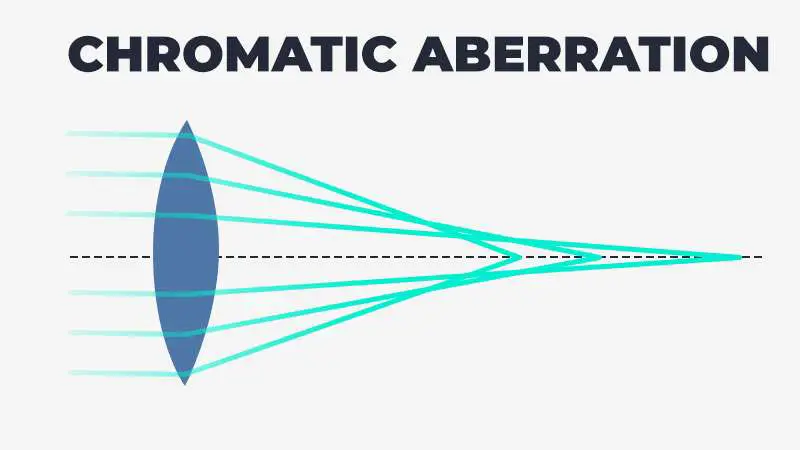Are you an astronomy enthusiast trying to decide between a reflector vs. a refractor telescope? Are you curious to learn more about refracting telescopes and their challenges? If so, this article is for you!
What is the biggest problem with refracting telescopes? The biggest problem with refracting telescopes is chromatic aberration. There are also two other issues. These are frequency dependence and glass absorption. Luckily, there are things you can do to minimize the effects of these issues.
In this article, you get
A detailed answer to the biggest problem with refracting telescopes
What’s important to be aware of when purchasing a refractor
A review of the limitations of refractors and how to minimize them
A closer look at chromatic aberration, frequency dependence, and glass absorption
By the end of this article, you’ll have all the information you need about the issues with refracting telescopes and how to minimize their effects.
Let’s dive right in.
Recommended For You
INTRODUCTION: WHAT IS THE BIGGEST PROBLEM WITH REFRACTING TELESCOPES?

Welcome to the world of refracting telescopes!
A refracting telescope is an optical instrument that uses lenses to gather and focus light from distant objects.
Refractors are very popular among amateur astronomers because they are
- relatively inexpensive
- easy to use
- provide great views of celestial objects
Refracting telescopes have been around since the early 17th century!
Astronomers have used them to observe stars, planets, comets, and other phenomena.
The main components of a refracting telescope are
- the primary lens (also known as the “objective lens”)
- the eyepiece lens
- the tube which houses the lenses
The primary lens gathers light from distant objects and focuses it onto the eyepiece lens, which magnifies the light for viewing.
While these types of telescopes can provide great views of celestial bodies, they have some limitations due to the nature of the lenses used in their construction.
DEFINITION OF REFRACTION
Refraction is the bending of light when it passes from one medium to another. Light bends when it enters glass. This bending causes parallel rays of light to converge at a focal point and those not parallel to converge upon a focal plane.
LIMITATIONS OF REFRACTING TELESCOPES
There are three main limitations of refracting telescopes. They are
- chromatic aberration
- frequency dependence
- glass absorption
Which one is the most significant limitation?
The answer is chromatic aberration.
WHAT IS CHROMATIC ABERRATION?
Chromatic aberration occurs when the light passing through the objective lens of a refracting telescope is split into its component colors, resulting in a blurry or distorted image.
The lens’s glass refracts different light colors at different angles, causing chromatic aberration.
WHAT ARE FREQUENCY DEPENDENCE AND GLASS ABSORPTION?
Frequency dependence refers to how the light of different colors behaves differently when passing through a given material, such as glass.
The result is that some colors focus closer to the lens than others, creating a blurry or distorted image.
Glass absorption is a problem with some refracting telescopes. Glass absorbs specific frequencies of light, resulting in less detail and contrast in images taken with such telescopes.
Fortunately, special coatings and optical designs can reduce chromatic aberration, frequency dependence, and glass absorption.
Let’s look into each of these in more detail.
HOW CHROMATIC ABERRATION AFFECTS REFRACTING TELESCOPES
Chromatic aberration occurs when different colored light rays fail to come to a common focus when they pass through the lens.
Lenses have a frequency-dependent refractive index. In other words, they refract the light of different wavelengths at different angles.
The result is the image in the telescope gets distorted and blurred.
One way to minimize chromatic aberration is to use multiple lenses. This solution reduces chromatic aberration by combining two or more lenses of different refractive indices.
A common way to minimize chromatic aberration is to use an achromatic or apochromatic lens. But these lenses are more expensive and difficult to manufacture.
WHAT IS FREQUENCY DEPENDENCE?
You may have heard of frequency dependence when it comes to refracting telescopes.
In a nutshell, frequency dependence is the amount of refraction at each lens surface.
HOW FREQUENCY DEPENDENCE AFFECTS REFRACTING TELESCOPES
Frequency dependence means that the amount of light bent when entering the lens can vary depending on the wavelength of light it encounters.
The result is a distorted image. It also makes it challenging to observe distant objects.
Special lenses or coatings can reduce the effects of frequency dependence.
WHAT IS GLASS ABSORPTION?
Glass absorption occurs when light passes through the glass lens of a telescope, and some of the light gets absorbed. The result is a dimmer image.
Special glasses are used that absorb fewer wavelengths. Coatings also help to reduce the amount of light lost due to absorption.
Choosing a telescope with high-quality lenses and coatings will minimize the effects of glass absorption.
SUMMARY
Thank you for reading my article, “What is the biggest problem with refracting telescopes?”
The biggest problem with refractors is chromatic aberration. You can get a refracting telescope with special coatings or multiple lenses to minimize the issue.
Other issues include frequency dependence and glass absorption.
Leaning towards reflectors? Read my article on why reflecting telescopes are better than refractors.




